Few British food production sectors have been hit as hard as bakery by the ongoing egg supply problems.
The egg industry has been dealing with ‘unprecedented’ pressures, according to trade body The British Egg Industry Council. Soaring costs have caused many egg farmers to cease production rather than face the risk of losing money on every egg they produce, while avian influenza has added to the strain on producers.
And although there are hopes that supply problems will ease this year, prices are expected to remain high.
“Reduced availability of eggs – whole, wet and powdered – has undoubtedly had a significant impact on British bakeries because they’re so prevalent in cake recipes, traditional brioches and pastry glazing,” says Lydia Baines, marketing manager for patisserie at Puratos.
She points out that eggs make up 8% to 10% of a traditional brioche recipe and can make up 25% or more of a cake recipe.
The case for egg reduction
This is not the first time the egg market has experienced price fluctuations, of course.
“This crisis didn’t arrive overnight – the business case for egg replacement, or reduction, has been strong for many years,” says Katrine Helene Fruergaard Holm, global industry marketing manager for Arla Foods Ingredients. “Price fluctuations and supply instability were with us long before the war in Ukraine, or the current avian flu outbreak.”
According to Lydia Stuart-Kregor, head of strategy and marketing at Oggs, which supplies a plant-based egg alternative, the situation has highlighted the potential pitfalls around egg use.
“The cost pressures, combined with the threat of animal-borne disease, has highlighted just how inefficient and unsustainable animal-based food production is,” she says. “That’s why our mission is to remove egg from bakery products and replace it with plants.”
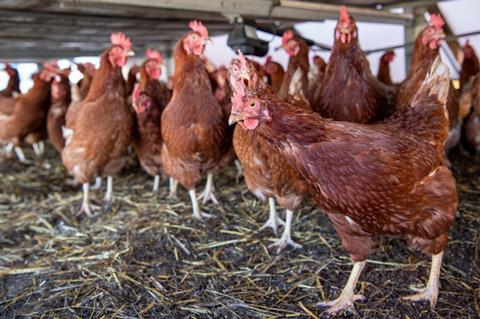
It’s a view echoed by Robert Lambert, marketing manager at Ulrick & Short, who says high egg prices and supply issues has prompted questions to be asked about the long-term strategy and sustainability of the baking industry having such a reliance on a single product.
Ulrick & Short launched its own Ovaprox egg reduction range more than a decade ago to help mitigate price volatilities.
“Egg alternatives and egg reduction technologies are now attractive propositions for bakers, while also having the secondary effect of accelerating plant-based NPD,” adds Lambert. “An increased appetite to either partially or totally engineer out egg is by no means confined to the bakery sector, although without doubt this is the largest single area where we have seen a push for reformulation.”
No surprise, then, that ingredients suppliers have seen increased call for egg replacers and reducers
“Demand for these alternatives was already on the rise before avian flu struck, but the current shortage has certainly accelerated enquiries and sales in various patisserie applications,” says Baines at Puratos.
She adds that these are accompanied by requests for clean-label solutions so that ingredient declarations and labelling don’t need to change: “It’s really important that reducing the egg content in a recipe doesn’t force packaging changes.”
Types of alternative
Oggs is currently working with major UK bakery manufacturers, helping them reduce their egg use by swapping out 20% of egg for Oggs Aquafaba. Made from chickpea extract, it is an ambient liquid egg alternative that replicates egg functionality as an ingredient from foaming to emulsification.
“Oggs Aquafaba often requires little or no change to the manufacturing process or recipe,” says Stuart-Kregor. “The UK egg shortage has been the catalyst for manufacturers to recognise the true value of egg alternatives, more so than ever before. As a more sustainable product with a stable supply chain that has the potential to create better bakes at a cheaper price.”
She adds that longer-term benefits include carbon reduction (Aquafaba is up to 85% less CO2 equivalent than eggs), lower calories, fat and salt than eggs. In addition, Oggs has seen flavour enhancements in trials by reducing the egg flavour and replacing it with a natural product.
Arla Foods Ingredients, meanwhile, produces the Nutrilac egg alternative that is based on whey protein.

“It offers similar properties to egg, with sensory evaluations showing that cakes made with Nutrilac retain a moister, fresher feel over their shelf life, and have a less fragile, more resilient crumb,” said Fruergaard Holm. “Furthermore, it can improve taste and texture without any change to water activity, even when egg content is reduced by 50% or more.”
She also points out that Nutrilac can offer a storage benefit, with a single bag of Nutrilac replacing around 4,000 eggs.
Puratos supplies two main products: the ACTI egg reducer is a clean-label egg replacer based on enzymes that can reduce egg content by up to 15% in a recipe; while Sunset Glaze can be used in place of egg wash in baking and pastry applications.
Ulrick & Short produces a range of egg replacers that are based on a variety of different base crops, with different processing methods applied to extract the natural functionality of the crop.
“This variety within the range ensures flexibility across applications – whether it be sponges, custards, fillings, or anything else,” explains Lambert. “For egg reduction specifically, this is crucial as the function of egg varies so much depending on application, it could be anything from binding, emulsification, aeration, glazing, tenderising or providing structure.”
He points out that the latest addition to the range is Ovaprox 14, which uses new protein technologies and replaces the egg white in meringues.
“As the functionality of egg is so diverse, each specific application and recipe has to be reformulated individually to ensure a successful product reformulation,” adds Lambert.
Challenges to adoption
So far so positive: there are many options open to bakers seeking to replace or reduce egg use, but what might prevent the use of egg alternatives?
“The biggest challenge we see currently is awareness,” says Stuart-Kregor. “Historically, egg alternatives have been highly processed powders that are not beneficial to product quality. We’re changing that with ambient liquid products that can truly compete with egg in terms of functionality.”
She believes the biggest opportunities with egg alternatives are around improving quality, health and sustainability. Oggs claims that replacing 162 tonnes of egg with its product would save 1.7 million tonnes of CO2 equivalent a year.
Meanwhile, Baines at Puratos says something that starts out looking like a problem can become an opportunity. She points out that the company’s Sunset Glaze, being completely egg-free, enables bakers to reduce allergens in their products as well as the risks of microbiological contamination.
The challenge is replicating all the functionality that eggs have in patisserie applications
“The challenge is replicating all the functionality that eggs have in patisserie applications,” she says. “It can be difficult to do that entirely – and certainly not with just one ingredient, but we’re making more progress every day as we expand our portfolio of plant-based ingredients and enzyme solutions.”
Little wonder then that, like most ingredient suppliers, Puratos expects demand for egg alternatives to increase.
“Even after the immediate problem of availability has passed, clean-label requirements and cost considerations will fuel further growth,” says Baines. “Plant-based diets will also influence egg replacement market, especially in products such as glazes where an easy switch can be made.”
Fruergaard Holm at Arla says it is very hard to predict what will happen to egg prices in future, which in itself is a reason to look to alternatives.
And Stuart-Kregor is in no doubt that this is the beginning of a large-scale shift towards plant-based egg alternatives in food manufacturing.
“If you have a product that can be easily inputted into your production, and that provides you with a better product at a lower cost, whilst also helping to reduce your business carbon footprint and support people’s health, why would you not?”
ADVERTISEMENT: PURATOS
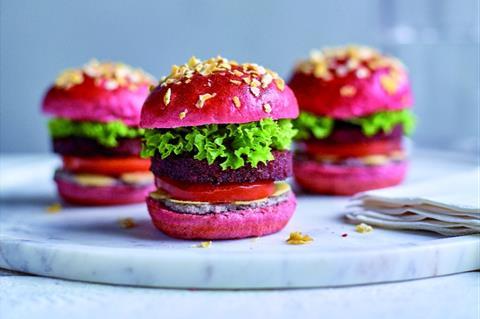
Recipe: Beetroot burger buns
Ingredients
Dough
- 1kg flour (100%)
- 200g water (20%)
- 45g fresh yeast (4.5%)
- 18g salt (1.8%)
- 80g sugar (8%)
- 80g Mimetic Incorporation (8%)
- 350g beetroot juice (35%)
- 10g Soft’r Cotton (1%)
- 30g Sapore Traviata (3%)
Topping
- Sunset Glaze
- Flax seeds
- Cornflakes
Filling
- Burger of choice
- Black bean hummus
- Frisee salad
- Yellow carrot
- Tomato
Method
Mixing
Mixing spiral: 3 minutes first speed, 6 minutes second speed
Dough temperature: 28ºC
Bulk fermentation: 10 minutes
Scale: 1,000g / 30 pieces
Make up
Shaping: Divider moulder 2.5
Final fermentation: 15 minutes in bakery and flatten down. ± 60 min at 38°C, 90% RH
Decoration before baking: Brush with Sunset Glaze and sprinkle with flax seeds and cornflakes
Baking
Oven temperature: 240ªC
Baking time: 8 minutes
*If using beetroot powder; use 10% and increase the water up to 58%




















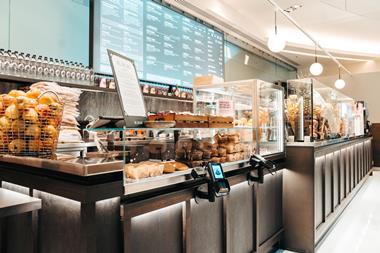


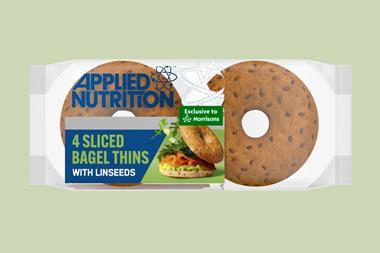



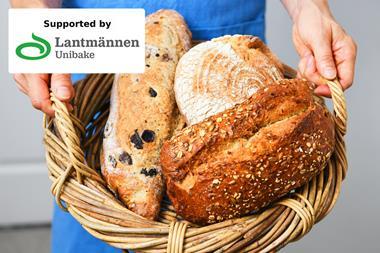
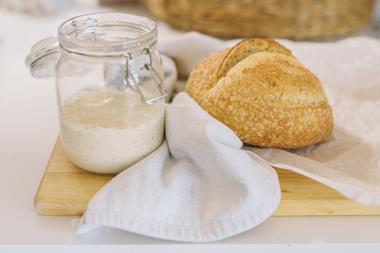




No comments yet